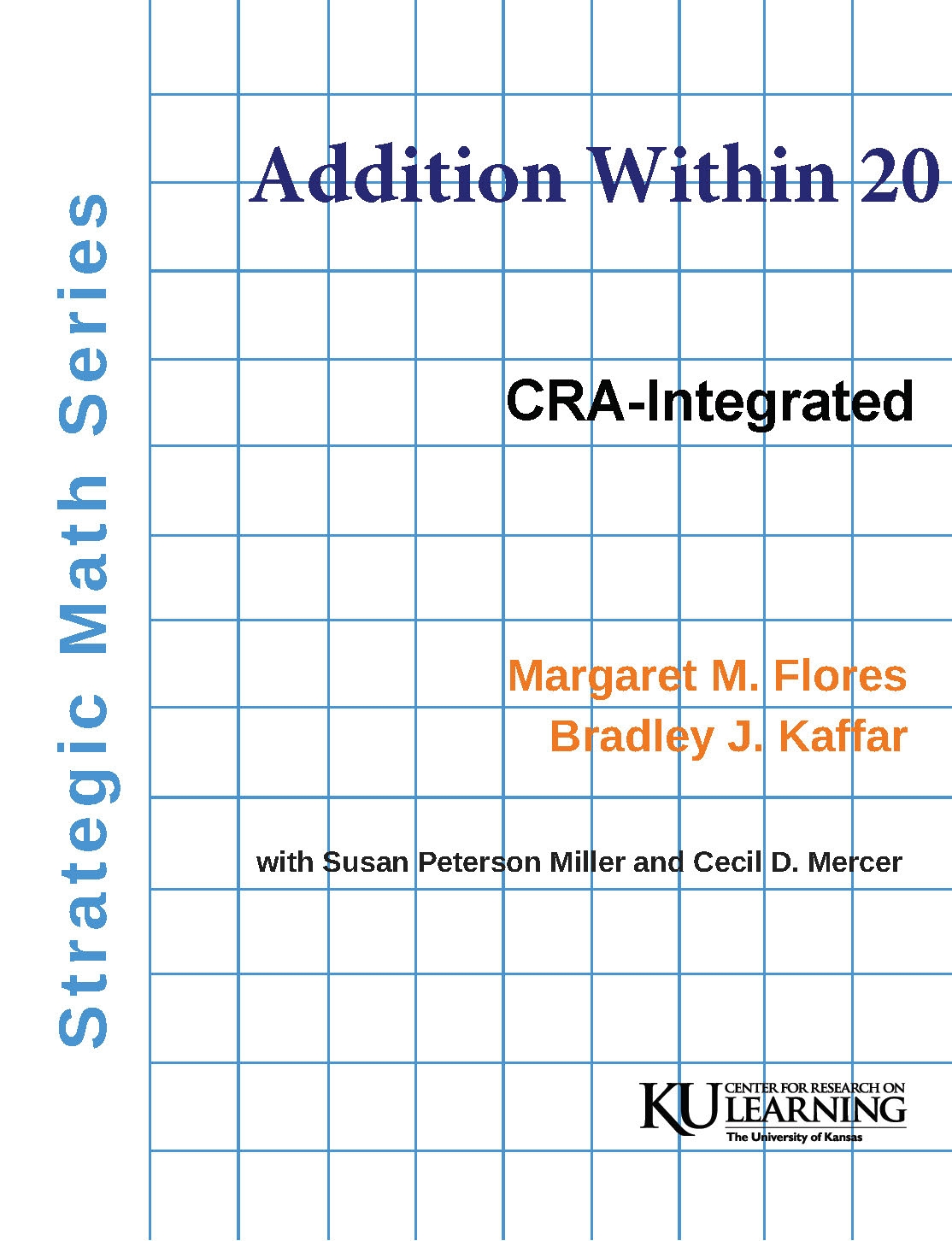
Publication Info: University of Kansas Center for Research on Learning, 2020
Addition Within 20 Resources:
VIDEO
Basic Addition Within 20 - Flores, Kaffar Video Fidelity Checklist Presentation
Short video clips from the 2020 SE Update conference:
- Who Needs This Intervention? Video,
- Why Use CRA (Concrete Representational Abstract)
- Content Addressed
- What is CRA?
- "Concrete"
- "Abstract"
- "Representational"
- What does "CRA Integrated" mean?
- Summary of Addition Within 20
- Lesson 1
- Lesson 2: Missing Addend
- Lesson 4 and 5: Fade Objects
- Lesson 8: FACT Mnemonic
- Lessons 9-12 Overview
- Progress Monitoring
- Instructional Sequence
- Field Test Results. Video,
- Learning Sheet Word Problem Examples
- Class size and base 10 blocks
- Supplemental Lessons
- HLPs
PPTs
- Addition Within 20 presentation (ppt)
MORE
- Awesome explanatory Powtoon Video
- Access Learning Strategy Checklists
- Description of Addition Within 20 from the SIM website
Stratenotes and Strategrams
Addition Within 20 Research
The first author conducted field tests of Addition Within 20 lessons with elementary students who participated in tier two and tier three instruction within multi-tiered systems of support (MTSS). During the first field test, three students who had completed first grade completed the program and showed significant progress (Hinton, 2018). The second field study included five second-grade students (Flores & Hinton, under review). Within a multiple-probe across students design, a second grade teacher used Addition Within 20 to teach three groups of students receiving tier two instruction. The students improved their knowledge of numbers and addition by increasing their performance from 6%-67% to scores of 100% after the intervention. Hinton and Flores (under preparation) conducted a study in which two second grade classrooms participated. One teacher used Addition Within 20 and the other teacher used the general education curriculum. The researchers assessed students’ growth in conceptual understanding of numbers and the addition operation. This included number magnitude, the commutative property, use of mental strategies to add, and completing missing addend problems. The students who used Addition Within 20 performed significantly better than their peers.
Research Articles
